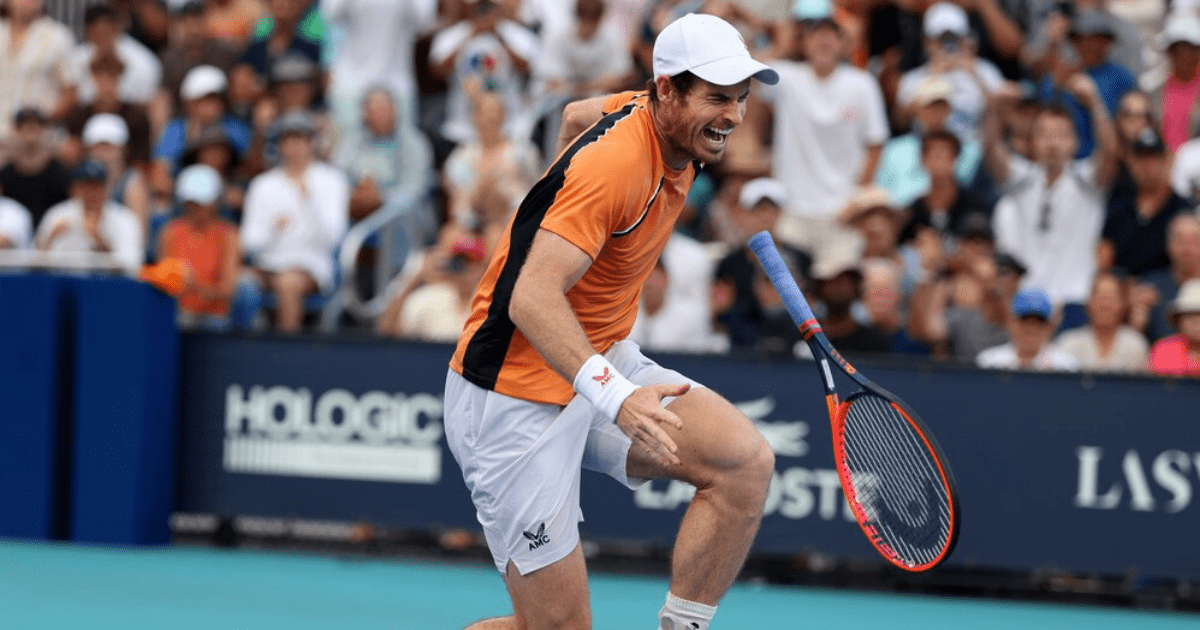Andy Murray Faces Extended Period Out After Ankle Injury
Andy Murray, the three-time Grand Slam champion, has confirmed that he will be out for an "extended period" after rupturing two ankle ligaments during a match at the Miami Open. The 36-year-old faces uncertainty over his future in tennis, with doubts arising about his participation in what could potentially be his final Wimbledon.
Murray's Instagram Post Confirms Serious Nature of Injury
In an Instagram post on Monday evening, Murray revealed the extent of his ankle injury suffered during a match in Miami. He disclosed a full rupture of his anterior talofibular ligament and a near-full rupture of his calcaneofibular ligament, stating that he will consult with an ankle specialist upon his return home to determine the next steps.
Tough Road Ahead for the Tennis Star
Murray expressed his disappointment over the injury, acknowledging that he will be sidelined for an extended period. Despite the setback, he remains optimistic about his return to the sport, humorously mentioning that he will come back with "1 hip and no ankle ligaments when the time is right ?."
Wimbledon Champion's Wimbledon Dreams in Jeopardy
The former Wimbledon champion's future participation in the prestigious tournament remains uncertain, with the severity of the ankle ligament damage yet to be fully assessed. Murray, who won Wimbledon in 2013 and 2016, faces a challenging road to recovery as he navigates this latest setback in his career.
From Grand Slam Wins to Injury Woes
Andy Murray, known for his triumphs at Wimbledon and other Grand Slam events, has faced numerous challenges in recent years, including hip surgery in 2018. Despite his resilience and determination, the road to recovery from this recent injury will undoubtedly test the tennis star's resolve.
Frequently Asked Questions
How can tennis players balance their training with schoolwork?
It is difficult for tennis players to balance their academic obligations with intense training schedules. Time management, prioritization skills and sometimes creative scheduling are required. Online learning and flexible academic programmes can help young athletes accommodate their demanding training schedules and travel plans. Support from parents, coaches and educational establishments is essential to ensure that players can achieve their goals while maintaining their education.
Can someone play tennis late and become a professional player?
Although it’s more difficult, it’s not impossible to achieve professional status by starting tennis later in life. Success will depend on athletic ability and dedication as well as access to good coaching and competition. Late starters must engage in intensive, highly-focused training. While the path is likely to be longer, with talent, perseverance and dedication, achieving a professional standard is possible.
How important are mental and psychological factors in tennis training for you?
Tennis requires mental and psychological training as much as physical training. The player must be able to control stress, maintain concentration, and manage the emotional highs, and lows, of competition. Many players use techniques such as mental rehearsals, visualization and goal-setting. Working with a sport psychologist can help players develop resilience, learn coping techniques for pressure situations and improve their mental performance to match their physical abilities on the court.
How important is it for you to compete at junior tournaments if you want a career as a professional tennis player?
Junior tournaments are a vital step on the road to a tennis professional career. These tournaments give young athletes the chance to compete against peers, gain valuable experience in matches, and learn how to deal with the mental demands of competitive play. Junior tournaments provide a good stepping stone for players to move up to higher levels of competition. They also have an impact on their ranking, their visibility in front of coaches and sponsors, as well as the overall development they make as athletes.
What type of fitness is necessary for tennis players?
Tennis is a physically demanding sport that requires a combination of aerobic endurance, anaerobic fitness, speed, strength, and power. Tennis players are often required to do cardiovascular exercises in order to improve their endurance. They also need to perform plyometrics, explosive exercises, and weight training exercises in order to gain strength. Core stability exercises and balance training also play an essential role in building the muscular endurance and coordination necessary for managing the physical demands of the sport.
Statistics
- Strength and conditioning coaches emphasize core strength, noting that an increase in core stability can improve shot accuracy by up to 43%.
- Studies show that superior agility and speed among tennis players can reduce their reaction time by up to 30%, which is crucial during high-level matches.
- Persistent mental training and sports psychology can help reduce performance anxiety by up to 60%, according to sports psychologists working with elite athletes.
- Statistical trends indicate that top tennis players usually have at least 5 people in their support team, including coaches, fitness trainers, and physiotherapists.
- Engaging in structured video analysis sessions has been shown to improve a player’s tactical decision-making by approximately 35%.
External Links
myprocoach.net
itftennis.com
essentialtennis.com
tennisfitness.com
tenniscompanion.org
How To
How to Effectively Recover After Intense Tennis Workouts
To prevent injury and to prepare your body properly for the next tennis session, you need to ensure that you have a good recovery following intense tennis training. Start with a cooling-down phase, which includes light cardio exercises to lower your heartrate gradually. Follow this with static stretching to promote flexibility and reduce muscle tightness. Utilize recovery techniques such as foam rolling or massage to alleviate muscle soreness and aid in lactic acid removal. Hydration is key; replace the fluids you lose during exercise and replenish any electrolytes that may be lost. You should also eat carbohydrates and protein after your workout to help repair and restore muscle glycogen. Rest days should be included in your training program to allow for full recovery.

